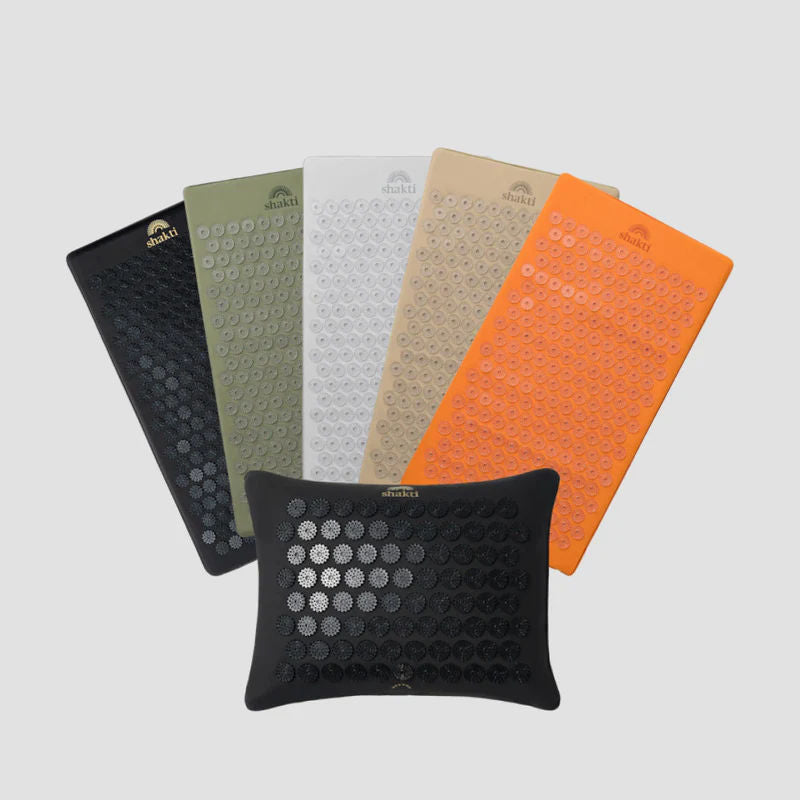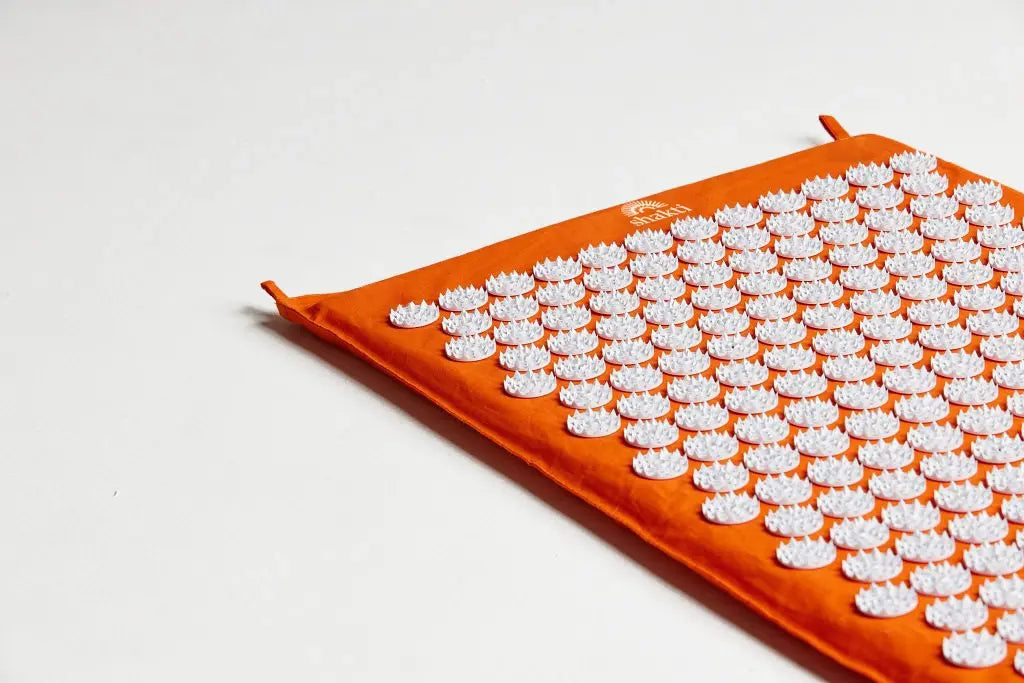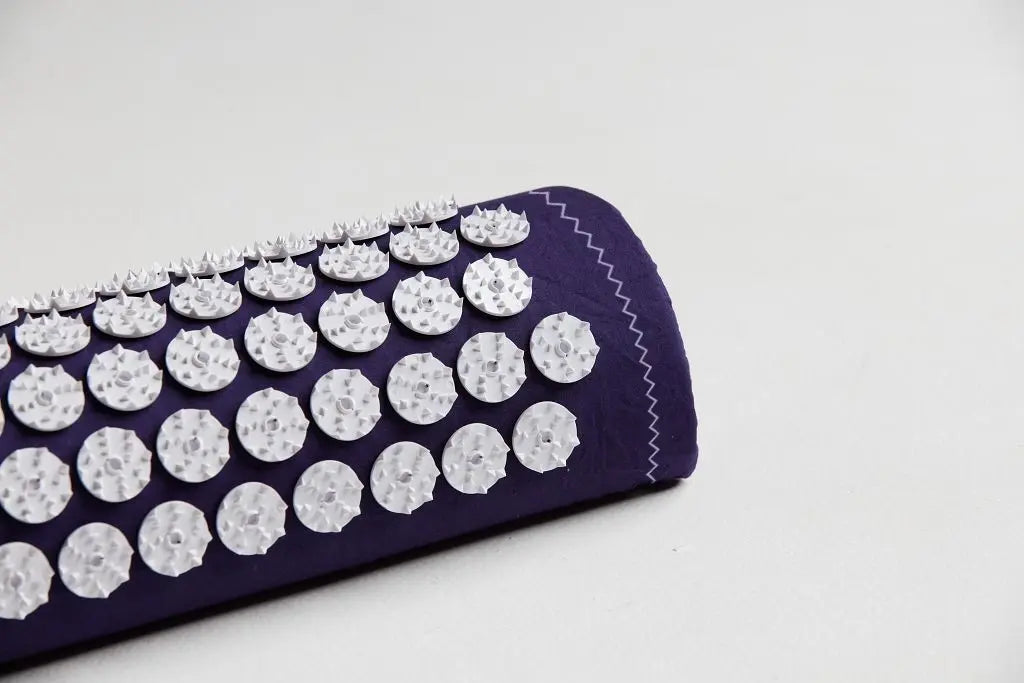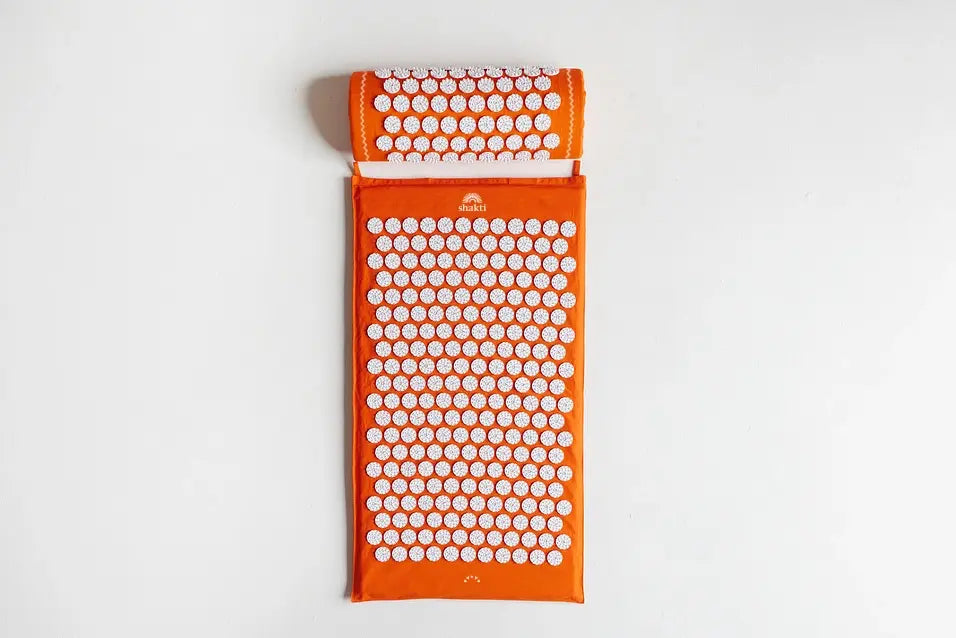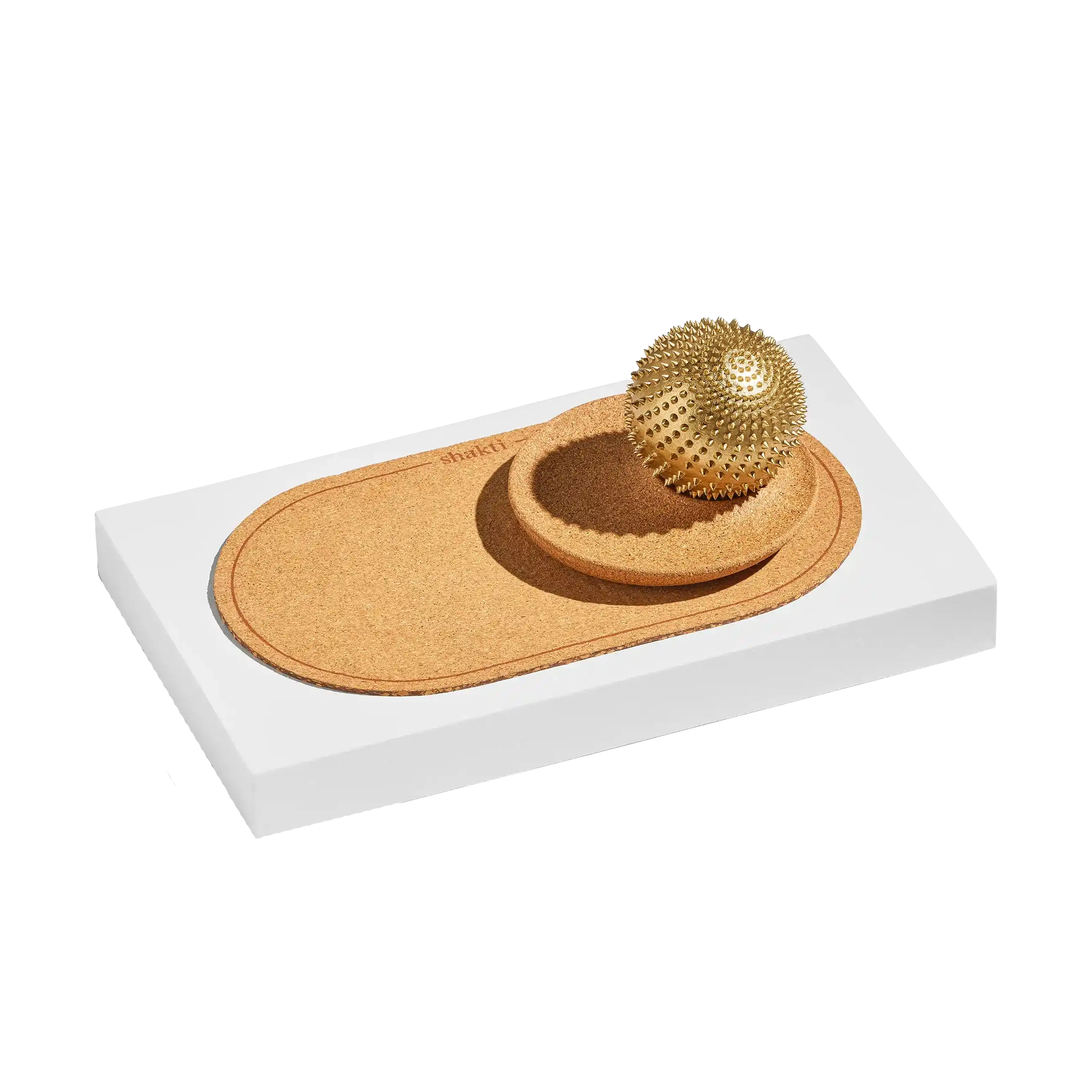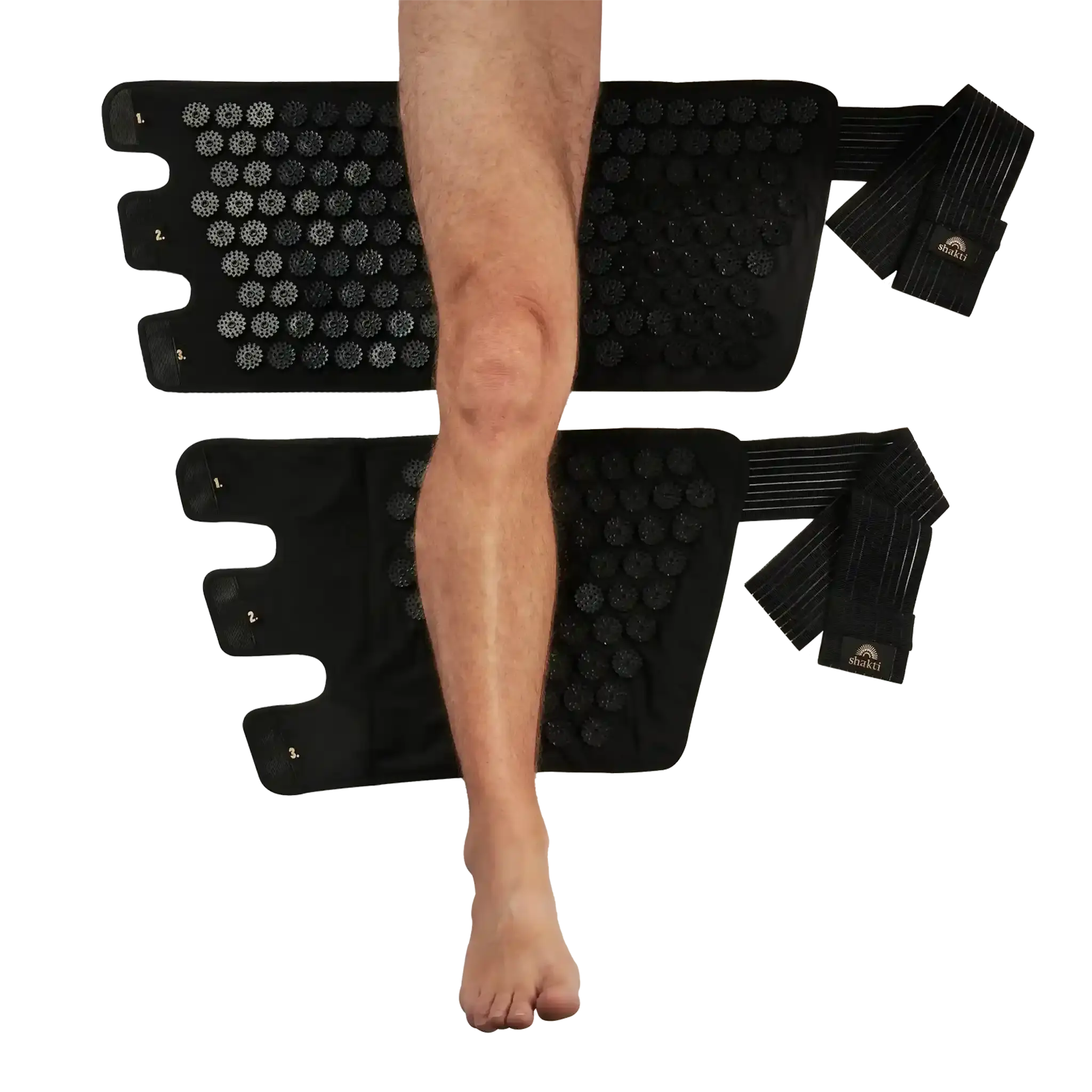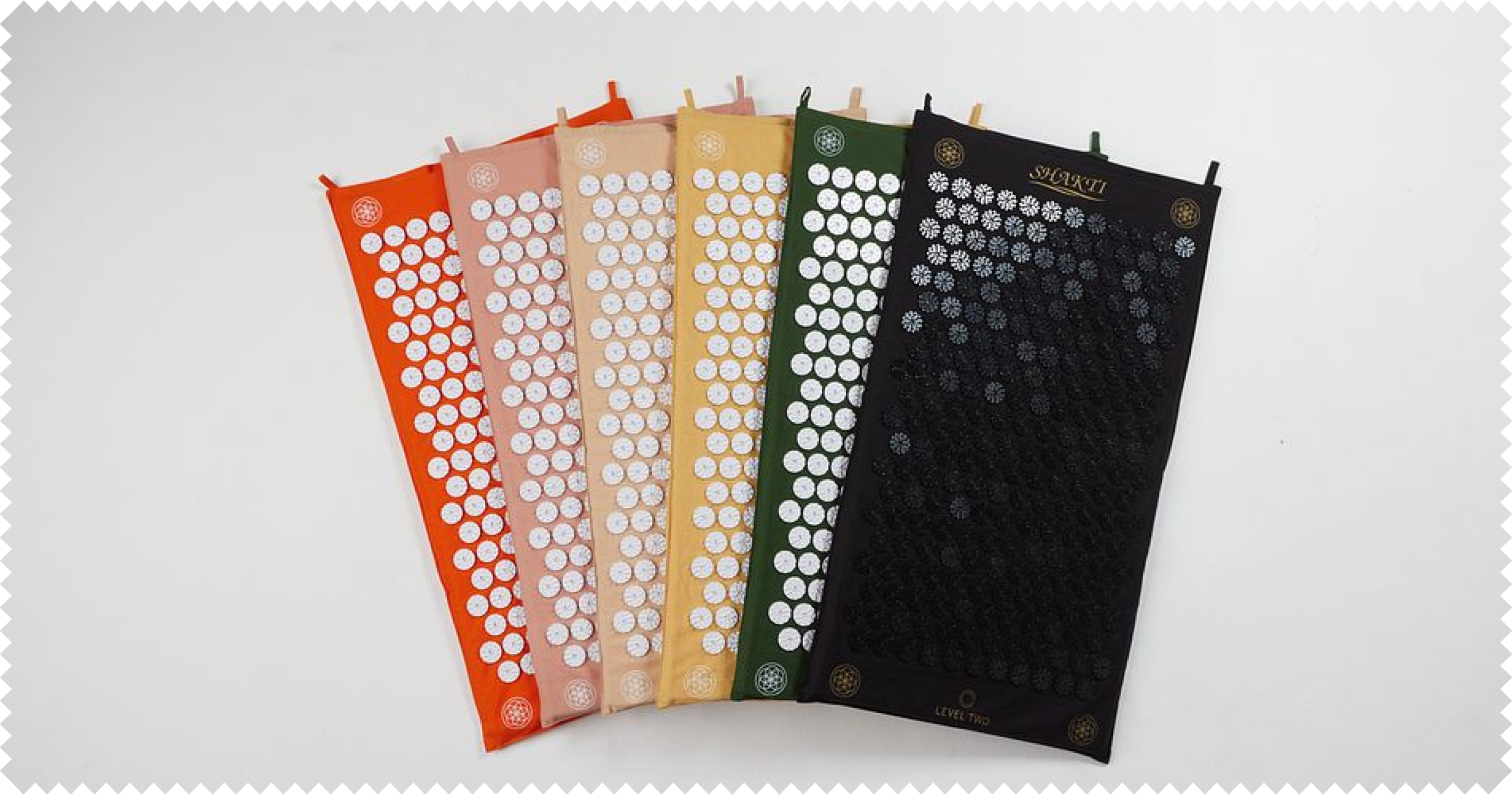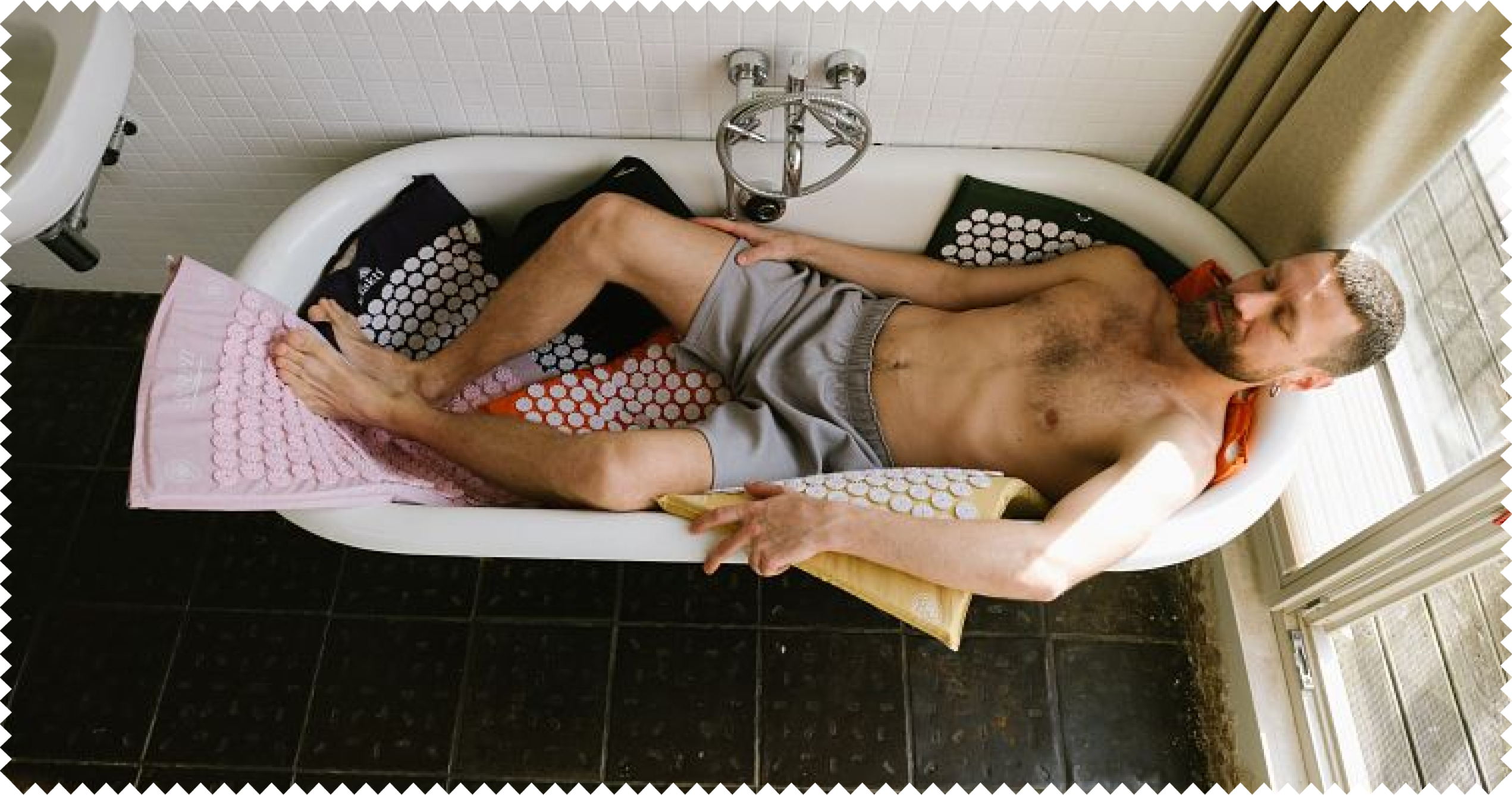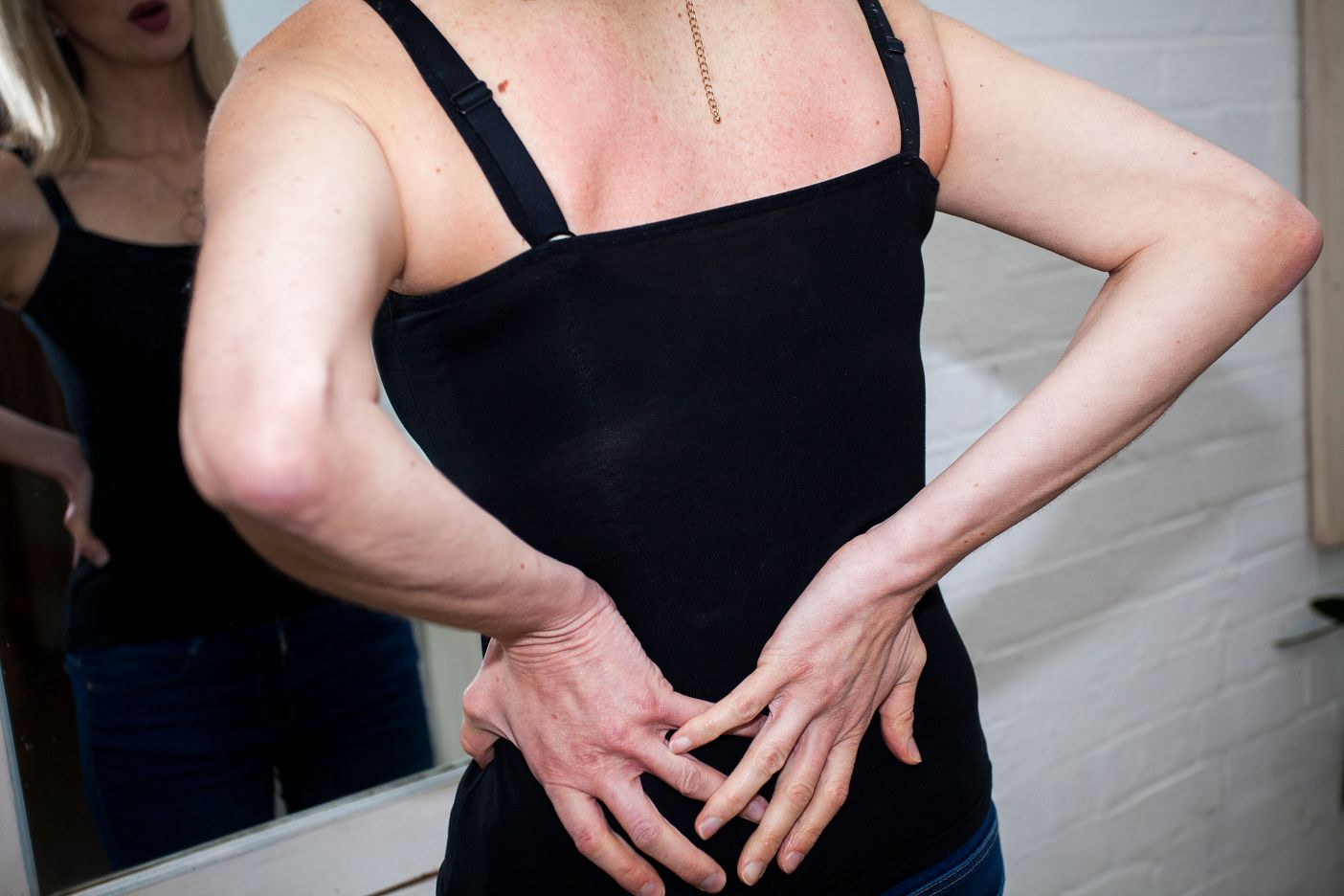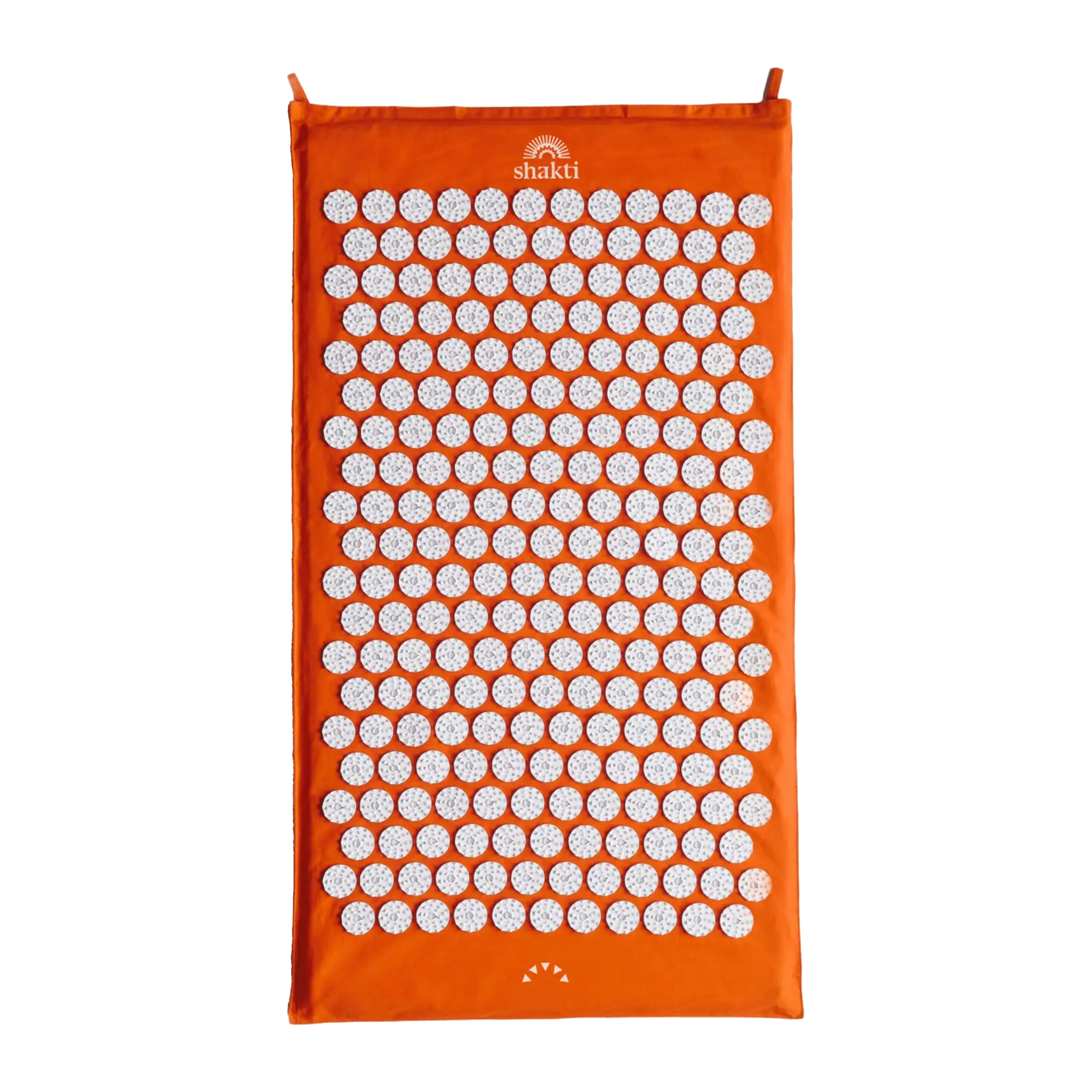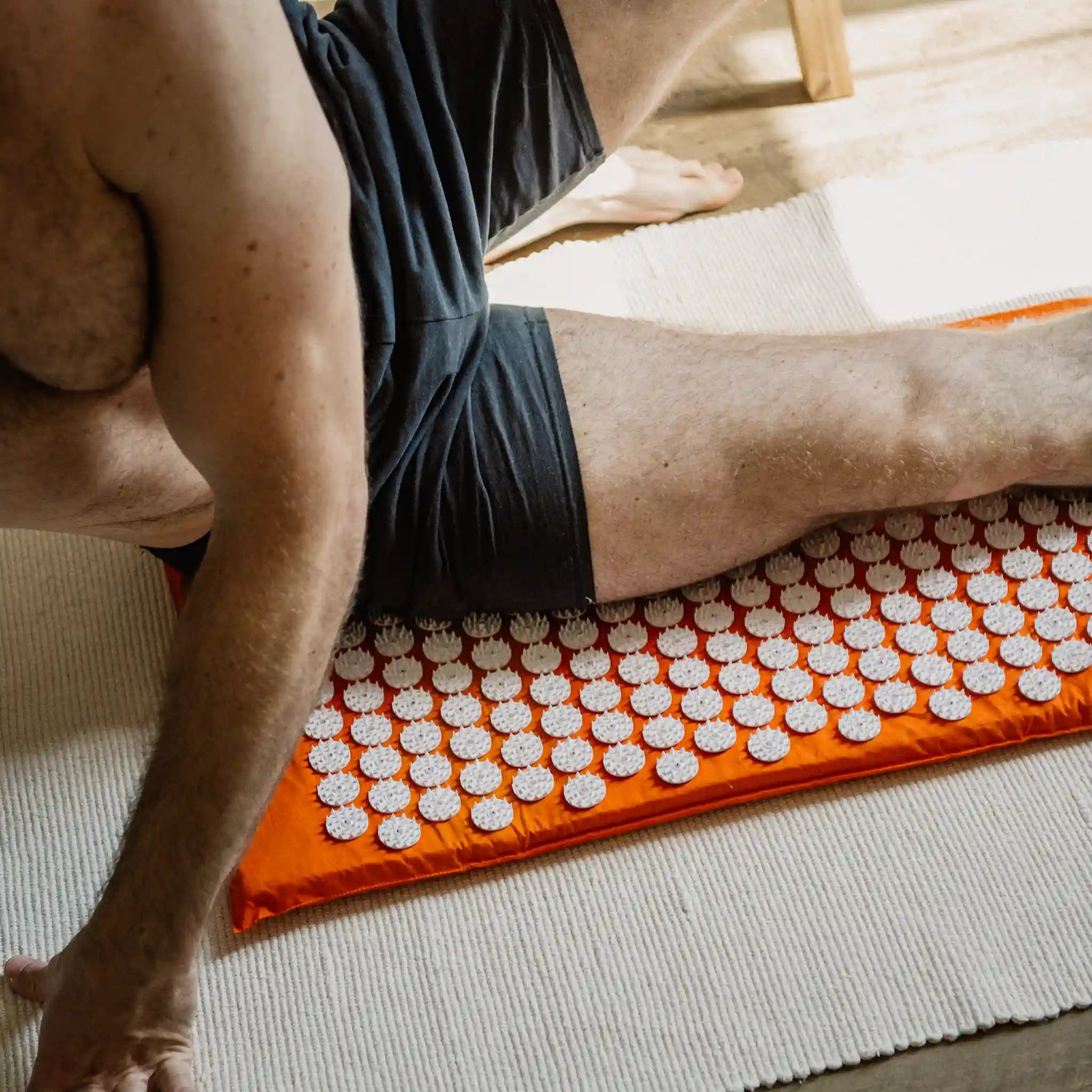- The back - how your spine works
- Lower back pain - a common disease
- Back pain in the lumbar spine: the lumbar syndrome
- One of the most common causes of back pain: lack of exercise and incorrect loading
- Relieve pain - here's what you can do for non-specific lower back pain
- Use acupressure for lower back pain
- Specific causes of lower back pain
- Lower left or lower right back pain - don't let it limit you
You've gone a little beyond your own limits during sport, lifted too heavy or perhaps simply bent over and moved the wrong way - and a sharp pain in your lower back causes your face to contort. Does this sound familiar? Back pain is not to be trifled with - although it is, as they say, a widespread disease, persistent pain in particular should not be underestimated.
Your back is essential for well-being and movement - especially the spine and the surrounding muscles. Without a healthy spine, you would not be able to stand or walk upright. While we generally take it for granted and don't usually "appreciate" it in everyday life, the spine is the focus of particular attention when back pain arises. Such complaints quickly have an impact on general well-being and should therefore be treated quickly. Lower back pain in particular is a common problem. This is caused by the lumbar spine. We show you the possible causes of your lower back pain and what you can do about the symptoms and triggers.
The back - how your spine works
You have pain in the lower back to the buttocks? Before we start looking for the causes, let's take a closer look at one of the most important elements of the musculoskeletal system. Because to understand the triggers for lower back pain, anatomy is also important.
Consisting of many different elements, the spine is very complex and, unfortunately, delicate. It is the support for your body and protects the spinal cord. The spine is made up of 33 vertebrae, 23 of which are flexible - a lot: You can bend forward, bend backward, bend sideways, and turn left and right thanks to the spine. Of course, the muscles around the spine also contribute to this function, as do the joints.
May we introduce: the spine
-
The vertebrae: This is the bony part of the spine. They are divided into individual sections, namely the cervical spine, the thoracic spine, the lumbar spine and the sacral and coccygeal vertebrae. A single vertebra has a round vertebral body with three projections to which the muscles, ligaments and tendons attach.
-
The joints: Between the individual vertebrae there are intervertebral discs and vertebral arch joints. They give the joints suppleness and act as shock absorbers between the vertebrae.
-
The ligaments: The anterior and posterior longitudinal ligaments run along the spine and provide stability. They also support the individual movements - in conjunction with many other ligaments.
-
The musculature: Bones, joints and ligaments are held together by the entire back musculature. The individual muscles ensure that you can bend, stretch and rotate your spine.
-
The nerves: Of course, there are also nerves along the spine, and very important ones at that. Among other things, they transmit information about organs, tissue and muscles to the spinal cord and thus to the central nervous system.
As you can see, the spine consists of many different elements and sections. So if you have back pain, it can have different causes. In the case of lower back pain, the problem is usually in the lumbar spine.
Lower back pain - a common disease
You've probably heard that back pain is a widespread disease. That's not from nowhere, because: Around one in four Germans go to the doctor once a year - because of back pain. So if you feel pain in your lower back, you're not alone. Almost everyone has experienced back pain at some point in their life. back pain and we know that: It's really unpleasant. The spine in particular is important for movement and is challenged both when standing and sitting. If the pain in the lower back is particularly severe, everyday life can suffer accordingly - from constant pain to insomnia to the inability to move, back pain can have a variety of consequences. However, the causes of lower back pain are sometimes not that complex.
Lower back pain - the lumbar spine
If pain occurs in the lower back, it is usually due to the lumbar spine located there. It consists of the 5 lumbar vertebrae and connects to the thoracic spine above it. The lower part of the spine receives the most stress in everyday life because it is, in a sense, the strong base from the torso. When you walk and move, the lumbar spine is the part of the back that is most intensively loaded, because it bears the entire weight of the upper body. That's why pain here in particular is extremely uncomfortable. Lower back pain is often associated with lumbar spine syndrome.
Incidentally, the movements that are triggered in the lower back include those that pass from the torso to the legs. This means that muscles such as the adductors or the iliopsoas (hip flexors) are also involved. If you have pain in the lower back, particularly in the hips or groin, these muscles should also be included in the search for causes.
Back pain in the lumbar spine: the lumbar syndrome
In principle, the term lumbar spine syndrome does not refer to a specific disease, but is an umbrella term that describes pain in the lower back - especially pain below the ribcage and above the buttocks. For many sufferers, the pain also radiates to the hips and buttocks and further into the legs. There are many causes of hip and lower back pain - we have broken down the most common triggers for you.
Differentiation between specific and non-specific low back pain
Before we go into the causes, we would like to explain an important aspect about back pain: In the treatment and the search for the cause, it is necessary to differentiate between specific and non-specific pain in the back:
-
Specific pain in the lower back have a clear cause, such as a previous illness, a slipped disc or similar.
-
Non-specific back pain in the lower back, on the other hand, has no clearly identifiable trigger for the pain. Back pain is non-specific in around 80% of cases.
One of the most common causes of back pain: lack of exercise and incorrect loading
I'm sure you've been there too: long days at the office, sitting at your desk in an uncomfortable chair for ages - and soon enough, the pain in your lower back comes knocking. In fact, the most common causes of non-specific back pain lie in our everyday lives:
-
Incorrect loading of the lumbar spine, e.g. due to incorrect lifting
-
lifting too often and too heavy
-
Lack of exercise
-
Constantly recurring, monotonous motion sequences, for example through constantly unchanging work steps
-
tense musculature
-
long sitting
-
Stress
-
Overweight
Surely some of these aspects sound familiar, don't they? Then you're in luck - even if the pain in your back says otherwise. But: You can do something about these triggers for back pain on your own.
Dysbalance in the spine can lead to lower back pain
A muscular imbalance can also trigger complaints in the back. In this case, the muscles are no longer in balance. Basically, the back and abdominal muscles are opposite each other, both contribute to your posture and work together. However, when one of these muscles is weakened and shortened while the other is stretched, muscular imbalance occurs. The best example of this is sitting hunched over at your desk: in the beginning, you're usually sitting straight in your chair, but the longer you sit ... the further your shoulders move forward and your back becomes rounded. If this posture is the order of the day, the abdominal muscles can shorten in the long run and the back muscles are stretched.
The result: a dysbalance that causes pain. If your lower back pain is caused by an imbalance, you can do your body some good with a mix of strength training and stretching exercises.
Relieve pain - here's what you can do for non-specific lower back pain
Is your back suffering after a long day at work? Do you always have pain in your back, lower left or lower right - and would you like to lack of exercise or relieve any tension? That is possible. Of course, if the pain persists, you should definitely see a doctor and have the cause of the pain clarified to rule out serious illnesses. Nevertheless, you can also do something for your own well-being in addition to conventional therapy:
-
Get out of the desk blues - declare war on lack of exercise. Gentle, physical exercise can have a soothing effect on acute pain. Even normal walking can help to loosen up the muscles.
-
Avoid one-sided stress on your lumbar spine.
-
Heat and cold treatments can help depending on the trigger.
-
Make sure your mattress is tailored to your body mattressso that your spine can regenerate while you sleep.
-
Build targeted exercises for the lower back into your everyday life to prevent it.
-
Use an acupressure matto relieve tension and increase circulation.
Exercises for the lower back: counteract pain
If you know your back pain is from constantly sitting at a desk, you can incorporate targeted exercises to strengthen your muscles and prevent tension:
Mobilization exercises against lower back pain
-
Place your feet hip-width apart, straighten your spine, hands hanging loosely next to your hips. Now take some momentum in your arms and bring them alternately to the right and left of your body so that your upper body rotates. The hips and legs remain as tight as possible, it's all about the movement in the spine and upper body. You can also do this exercise next to your desk for 1-2 minutes in between and do your back a little favor.
-
Lie on the floor on a fitness mat or carpet. Position your feet so that your knees are comfortably bent. Now lower your knees to your left side, keeping both shoulders on the floor. Can you feel the rotation in your spine? For a more intense rotation, you can extend your arms and turn your head and gaze in the opposite direction of your knees. Repeat this exercise for the other side of the body, dropping the knees to the right.
Stabilization exercises: strengthen muscles and prevent back pain
To prevent lower back pain, you can exercise your muscles with some training.
-
Come into forearm support on a fitness mat or carpet. Your core muscles are activated, spine and legs form a straight line. The head is the extension of the spine. Make sure that you do not fall into a hollow back! Now breathe relaxed and hold the position for about 20 seconds. Then you can put your knees down on the mat, wait a moment and start the next round.
-
Lie on your stomach. Bring your arms over your head past your ears and stretch slightly. Now lift your legs and upper body slightly off the mat so that your buttocks and back muscles are tense. Hold the position like this, or move the arms and legs up and down in small movements.
Use acupressure for lower back pain
Surely you've heard of acupressure before. If not, here is a short summary:
Acupressure is part of traditional Chinese medicine and was developed around 5,000 years ago. According to the theory, meridians, energy pathways, run through your body. If these are disturbed or blocked, this can lead to impairments - including pain. Acupressure points are located next to the meridians. By treating these directly, blockages can be released and the energy pathways are free again. The bladder meridian is particularly important for the back area - in fact, it is the strongest meridian in your entire body and runs from the corner of the eye via the head and neck over the entire back.
To treat your acupressure points along the bladder meridian, you can easily use an acupressure mat. It is equipped with many small points. When you lie down on it, the points press into the muscles, increasing the blood flow so that the body area becomes warmer. Tension and the like can be relieved - and deep relaxation is also a fabulous side effect.
Lower back pain treatment - exercises with the acupressure mat
The use of the acupressure mat for lower back pain in the lower back is very simple: place the mat on a flat surface. Then lie on it with your back and stretch your arms out to the side. If you've never laid on an acupressure mat before, try it first while wearing a thin shirt. If you already have some experience, you can simply make yourself comfortable on the mat without clothing. If you want to intensify the effect, bend your knees and pull them towards your chest. This puts the focus particularly on your lower back. Stay on your acupressure mat for 20 minutes.
Attention: If you are pregnant during pregnancy If you have pain in your lower back during pregnancy, you should not use the acupressure mat without medical advice. This is because there are also acupressure points on your back that could promote premature labor. So be careful here and ask your doctor for advice.
Specific causes of lower back pain
In addition to the non-specific causes that often lie in our everyday lives, there are of course health-related causes for lower back pain. These include, for example:
-
a pregnancy
-
a herniated disc
-
Osteoporosis
-
inflammation of the renal pelvis
-
inflammation of the prostate
If you are unsure where your lower back pain is coming from, you should definitely have it checked out by a doctor. At the latest, if you have symptoms such as numbness, severe pain in the lower back and kidney area, lower back pain during pregnancy, or in general, if your complaints last for several days. Even if your quality of life is severely limited by the back pain, the doctor can help you. Depending on the trigger, he can prescribe pain medication, physiotherapy or physiotherapy and thus help you with non-specific pain.
Lower left or lower right back pain - don't let it limit you
... but actively shape your everyday life and incorporate gentle exercise into your daily routines. If you have frequent lower back pain, for example, because you sit for long periods of time or perform monotonous movements at work, prevent pain with exercises for the lower back. A little exercise in your daily routine can work wonders and strengthen your back for the long term. If you are unsure, seek medical advice. For non-specific pain, in addition to exercise, you can use cold and heat as well as acupressure for relief.


